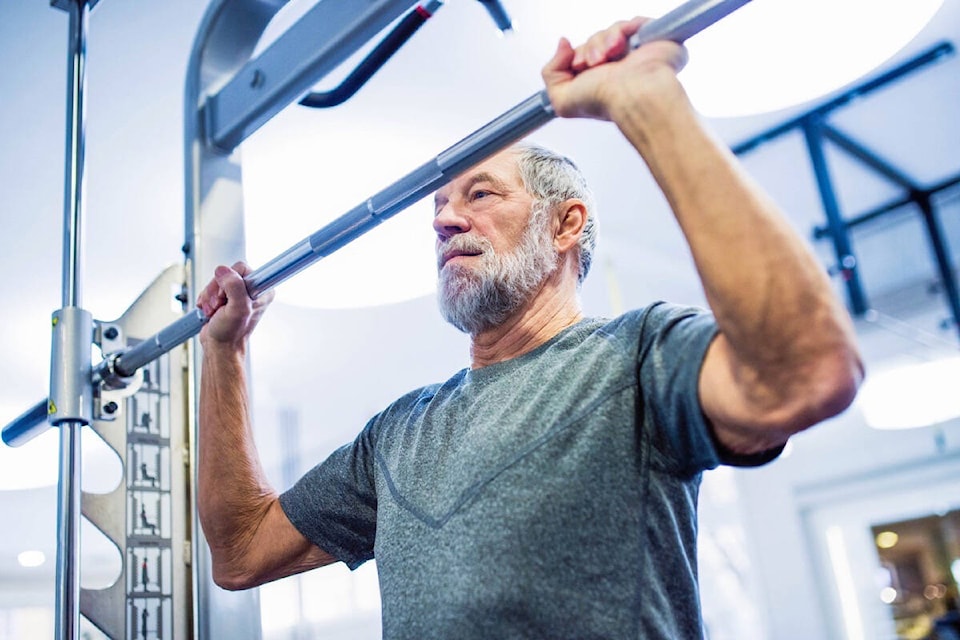Ron Cain | Columnist
The aging body begins its slow descent much earlier than most people think.
On average, in non-athletic adults, the slow side begins in the early 30s, not 70.
Muscle loss, also known as sarcopenia, begins much earlier than most people think, and it’s not steady. Between the ages of 30 and 50, the loss rate is relatively slow and consistent. From age 50 to 80 the rate of loss increases every year and after 80 the rate of loss doubles.
Why should you worry about this? Loss of muscle in middle age is associated with fat gain and muscle loss, and in later years in functional loss – the inability to get up those flights of stairs, lift that bag of flour out of the car trunk, get out of a chair without making unusual noises, balance loss and the slowing of metabolism.
We are being socially programmed to take it “easy” as we age into our retirement years. We don’t want to do anything if we hurt ourselves, and exercise makes us sore, so that must be bad, right? Nothing could be further from the truth.
Exercise causes damage to the body cellular level trauma to muscle fibres, soreness from lactic acid, aching muscle. Exercise causes this micro-trauma and sends signals to the body to repair all of the damage with exercise released antioxidants and anti-inflammatory agents, and improved blood flow.
The process of breaking down the body and repairing it and making it even stronger than before, has been scientifically proven to reduce the risk of dementia, diabetes, depression, high blood pressure and considerably more.
So how hard do older adults need to work out and is it safe? This is where it gets interesting.
Research on the relationship between exercise intensity and volume and fitness gains in seniors in comparison to young adults has blown away stereotypes and misinformation. A clinical review of 33 studies showed that the best results require resistance training three times a week using a weight that allows for 12-15 repetitions performed for at least two sets.
The seniors in some studies underwent measurements to compare their muscle gain versus the younger cohort, and surprisingly the average gains were as good or better. Just because you collect your pension does not mean your body does not enjoy being challenged – in fact your body will thank you.
A study of women in their 60’s, who were diagnosed with osteoporosis, showed heavy resistance training increased bone density and during the study, there were no injuries.
As a trainer with more than 40 years of experience, my observation of older clients is that they can still train with vigour. Still, they benefit by following a gym day with a full day off with perhaps mild exercise such as walking or biking, and should not be working out really hard on consecutive days.
The benefits of exercise increase with age. The worse shape you are in the more profound the changes will be.
Ask yourself how you want your last few years to be – needing help to get out of a chair and taking all kinds of pills, spending your savings on care – or packing your bag to go on another trip or competing in the Seniors Games. It’s your choice, and today, you can take steps towards a better future.
•••
Ron Cain is the owner of Sooke Mobile Personal Training. Email him at sookepersonaltraining@gmail.com or find him on Facebook at Sooke Personal Training.
editor@sookenewsmirror.com
Like us on Facebook and follow us on Twitter
